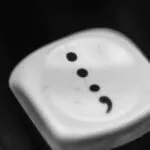
When to Use Parentheses vs Brackets
Why are there different kinds of brackets, and how do you know which one to use? Each type of bracket serves a purpose. In this blog, we’ll explore the difference between parentheses and brackets, explain when to use them, and provide some examples.
What Are Parentheses?
Parentheses (also known as round or curved brackets) are a type of punctuation mark. They’re always used in pairs and are the most common form of brackets.
Words that are enclosed in parentheses represent nonessential information and can be placed within or after a sentence. This information generally contains an explanation or opinion on something expressed in the sentence.
To test whether something is essential or not, just remove the words contained within the parentheses. If the sentence still makes sense, then those words aren’t essential (but they may still be helpful).
A few other, but less common, uses of parentheses include:
- Abbreviations and acronyms
- Date ranges
- References, sources, and in-text citations
- Numbered or lettered horizontal lists
Examples of Parentheses in Sentences
Most style guides recommend that at the end of the sentence, the final punctuation mark goes outside the second (closing) parenthesis. But if the nonessential information contains an exclamation or a question, it’s okay to put it inside the parentheses.
For my birthday, my mom made chocolate cake (that’s my favorite).
She decided to put pineapple on the pizza (does anyone like that?), so we didn’t eat it.
Today, my coworker was excited about getting a small promotion (senior burger-flipper).
We need to examine the Department of Defense’s (DOD) new security strategies.
Plato (428 BC–348 BC) wrote about a lot of Socrates’ teachings.
You need to bring the following things on the hike: (1) proper shoes, (2) adequate water, (3) a good hat, and (4) some light snacks.
Parenthesis vs. Parentheses
These words look similar because they both have Greek origins. They might seem a little difficult to understand, but the difference between them is quite simple: one is the singular form and the other is plural.
- Opening parenthesis: (
- Closing parenthesis: )
- A pair of parentheses: ()
What Are Brackets?
Brackets (also known as square brackets) are a type of punctuation mark that is also used in pairs to set aside nonessential information, but they generally function differently from parentheses.
Brackets aren’t as common and are generally used for quotations. They show new or condensed information or revisions that the author has added to a quote to improve overall clarity or flow.
If you want to show that part of a quotation has been removed, you can add an ellipsis between brackets in the middle of the quote.
You can also use [sic] to show that the original quote contained an error. That way, the reader won’t think that you were the one to introduce the error.
Finally, square brackets can also be used if you need to put extra information inside other brackets.
Examples of Brackets in a Sentence
As with parentheses, make sure you include all relevant information inside the square brackets.
Original: “Try not to become a man of success, but rather try to become a man of value.”
Revised: “[T]ry to become a man of value.”
Original: “My first mission trip was difficult, and it was hard adjusting. But, I believe I did a good job.”
Revised: “My first mission trip was difficult […] But, I believe I did a good job.”
“His mom told all of them to make there [sic] beds.”
Jim bought three new cars (he also bought two motorcycles [a Harley and a Kawasaki]).
Becoming an Editor or Proofreader
If proper punctuation usage is something that interests you, consider checking out our Becoming a Proofreader and Becoming an Editor courses.
There are a number of learning modules that will teach you everything you need to know about parentheses, brackets, other punctuation, and much more. You can even give our free trial a go today!









Leave a Comment
Your email address will not be published.